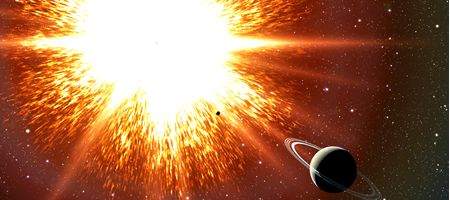A Danish physicist has concluded that the explosion of nearby supernovae has strongly influenced the development of life on Earth.

Professor Henrik Svensmark of the Technical University of Denmark says his findings support the idea of a long-term link between cosmic rays and climate.
When the most massive stars reach the end of their lives and explode as supernovae, they release vast numbers of high-energy charged particles known as galactic cosmic rays (GCR).
And if a supernova is close enough to the Solar System, the increase in cosmic rays can have a direct impact on the atmosphere of the Earth.
Professor Svensmark looked back through 500 million years of geological and astronomical data, comparing how closely the planet’s approached supernovae as it moves around the Milky Way with the geological record.
And, he says, the changing frequency of nearby supernovae seems to have strongly shaped the conditions for life on Earth. Whenever the sun and its planets have visited regions of enhanced star formation in the Milky Way galaxy, where exploding stars are most common, the diversity of life has flourished.
Indeed, he says, the diversity of life over the last 500 million years can be explained entirely by tectonics and supernovae, with the variety of life greatest when supernovae are plentiful.
This is probably because the cold climate associated with high supernova rates brings a greater variety of habitats between polar and equatorial regions, while the associated stresses of life prevent the ecosystems becoming too set in their ways.
The data also support the idea of a long-term link between cosmic rays and climate, says Svensmark, with supernovae a more significant cause than the sun.
“When this enquiry into effects of cosmic rays from supernova remnants began 16 years ago, we never imagined that it would lead us so deep into time, or into so many aspects of the Earth’s history,” says director of DTU Space professor Eigil Friis-Christensen. “The connection to evolution is a culmination of this work.”






